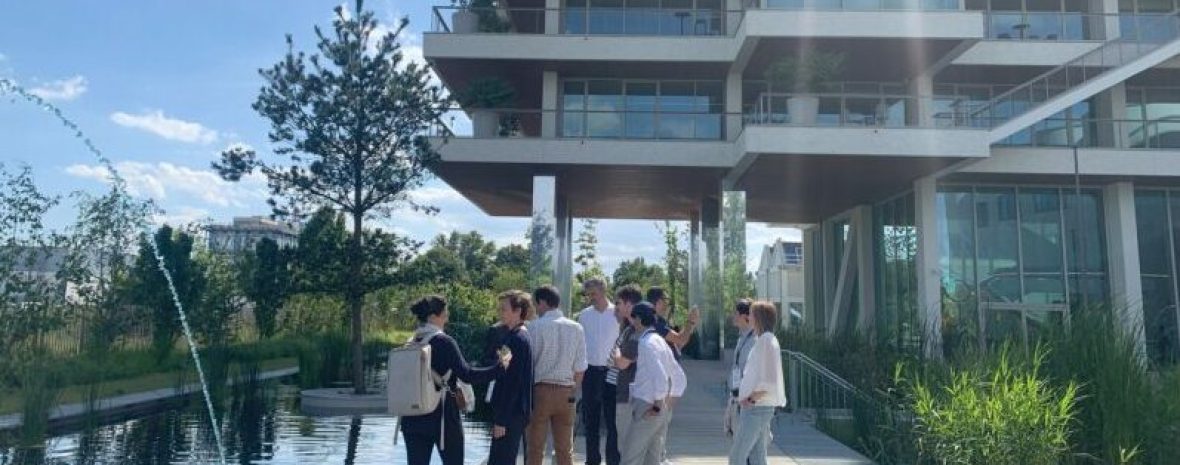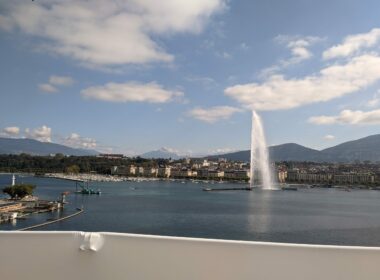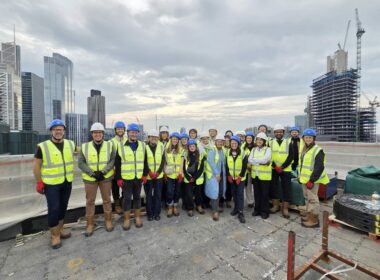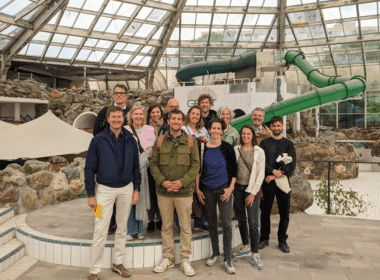Review of our study trip to Strasbourg, accompanied by 12 Brussels experts in sustainable construction.
Located at the Franco-German crossroads, benefiting from both a rich heritage and a strategic geographical position, Strasbourg is a beautiful historical city blessed by its Alsatian and European history. Its serene waterways flowing towards the Rhine, its landscaped green banks, its blend of historic and modern architecture, its vibrant city center with the comings and goings of bicycles and trams… It is undeniable, there is a certain softness to life in Strasbourg.
Our study trip starts early in the morning at Brussels-Midi station with the TGV heading to Strasbourg. The train journey is interesting as it allows the various participants a first meeting over a coffee in the dining car. After a 4-hour journey, the serious business begins with our arrival at the Build & Connect Summit.
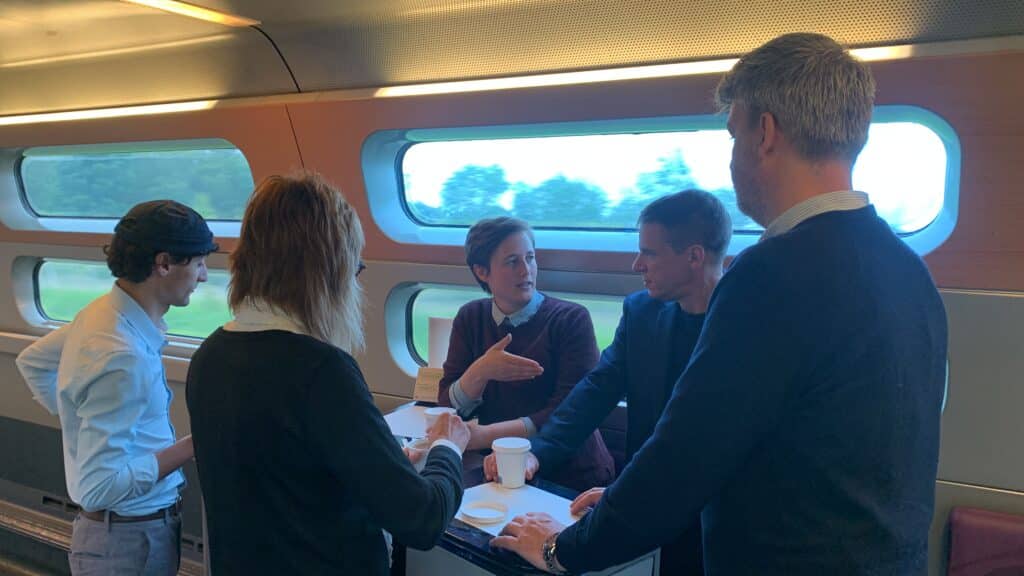
The Build & Connect Summit, in its 6th edition, focused on decarbonization in a multifactorial crisis context. Conferences, keynotes, round tables, and meetings with innovative companies in the fields of renovation, construction, digital, and circular economy. A unique opportunity to exchange with these participating companies, all working towards innovation and sustainable development. As part of this conference, EEN Est de France organized a B2B event in which all members of the ecobuild delegation participated.
For ecobuild.brussels, the most promising meetings during the B2B were as follows:
- LA WOODTECH: The Competitiveness Cluster for the forest-wood-paper sector brings together and supports start-ups that are evolving the Forest-Wood sector through their innovations, whether incremental or breakthrough, technical or operational, in direct use of wood or in service of the industry, across the entire value chain of the sector.
- BUILD&CONNECT: The competitiveness cluster dedicated to sustainable buildings and territories. As a reference network for innovation in the building sector, we promote the economic development and competitiveness of construction and real estate actors. An actor in the Grand Est region and recognized at national and European levels, Build & Connect contributes to the visibility of companies and the territory.
- Hellenic Organic & Printed Electronics Association – HOPE-A: The Organic and Printed Electronics (OE) industry is a cutting-edge global innovation sector set to revolutionize conventional electronic, energy, and photonic applications. Among the most important applications of OE are organic photovoltaics (OPV), electronic paper, organic light-emitting diodes (OLED) for displays and lighting, sensors, thin-film batteries (TFB), sensors, and biosensors, etc.
- NEOBUILD: Innovating together to promote sustainable construction daily is Neobuild’s goal. Neobuild is the first and only Technological Innovation Center for Sustainable Construction in Luxembourg. By adopting a business-oriented approach, Neobuild guides and facilitates innovation with a view to long-term value creation for the Luxembourg economy.
- SOPREMA – Sourcing Waste Raw Materials: Soprema works towards a society with zero discrimination, zero waste, and zero CO2 emissions without compromising the quality of its products. To overcome current and future challenges, we have made people, the circular economy, and building a better future our focus. We firmly believe in creating a new economic model that revolves around:
- well-being at work;
- reuse of raw materials;
- low carbon emission solutions;
- and other sustainability efforts.
- REGION GRAND EST – Direction économie du Vivant: The Grand Est region has a common and shared strategic ambition with the territory’s stakeholders, called “Ambition 2030”. The main goal is to accelerate transitions in the living economy sectors, including agriculture, viticulture, forestry, and bioeconomy, addressing the four major challenges of tomorrow:
- food security;
- energy sovereignty, aiming for carbon neutrality;
- preserving the health of environments (soils, air, and water) to secure production in a context of climate change;
- development of bio-based products.
- STRASBOURG YNOV CAMPUS – Architecture & Digital Building: From drawing to 3D, through construction techniques and interior design, realize fulfilling projects throughout your course and become the sought-after professional in the sector. The strengths of the YNOV Interior Architect & Digital Building training:
- a complete path covering all phases of an architectural project: from the existing state to project completion;
- project-based learning, 48-hour challenges, team challenges;
- The Fabryk: workshops in immersion with our partner craftsmen (wood, metal, ceramics, laser cutting, upholstery, stained glass…).
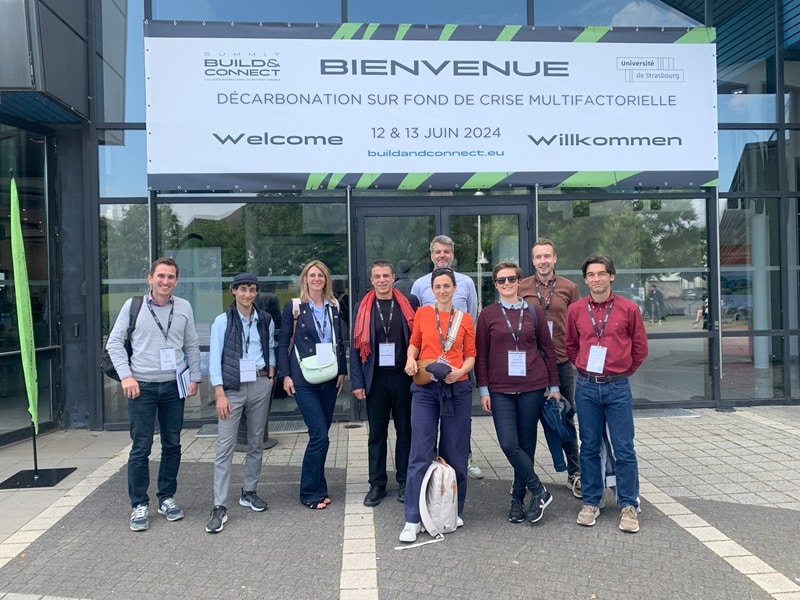
In the evening, we gather for a first networking dinner, an opportunity to discuss the meetings, the conferences we attended, and the adventures in our own activities and lives. If you are in Strasbourg, restaurant MADELEINE with its seasonal cuisine, using local producers who are more than just suppliers, is highly recommended.
On Thursday, we start the day with a morning at the Build & Connect Summit conference. What did we think of it? Opinions are divided, although we all agree that the invested resources are impressive: three conference rooms, a well-filled program with certainly some repetitions, simultaneous translation of the speakers, very professional staging of the conferences, automatic recording of presentations, well-prepared slideshows, etc. The conference itself seems to suffer somewhat from the financial resources required for its execution and gives the impression of too easily yielding to the sponsors’ demands. Moreover, the focus is often on French legislation, which is of lesser interest to foreign visitors. The overall impression remains positive, but given the number and origin of the participants, we are convinced that many stories about innovation in the construction sector could not be heard.
In the afternoon, we head to the SOPREMA headquarters, renamed “Le Grand Charles” by its owners. A modern, high-performance energy building where all means have been deployed to improve the well-being of employees as well as the workers of the neighboring factory. Fitness room with modern equipment and indoor squash court, yoga room, padel and urban football courts, hypermodern and welcoming canteen with a balanced menu. The garden surrounding the building has been designed to significantly increase the biodiversity of this industrial site with water features that provide coolness on summer days. Simply impressive! One of the most strategic choices of the company is to have integrated the research labs into the offices, which greatly increases communication between researchers and management. The results are visible during SOPREMA’s presentation, which emphasizes that most Soprema products are largely made from recycled raw materials.
Highlight of this visit: the exhibition of a real mammoth skeleton in the entrance hall, matching the company’s logo, which features a mammoth.

On the last day of the study trip, we visited the new developments as part of the Les Deux Rives project. Some figures: 250 ha in transition connecting the banks of the Ill to the banks of the Rhine, 1.5 million m², 9,000 housing units, or 20,000 new inhabitants in the long term, 8,500 jobs. An EcoCity project that combines social and environmental innovations (sustainable mobility and shared parking, participatory housing, wood construction, positive energy tower, citizen and cultural activation of the urban project, etc.).
We start with an introduction to the project around the immense and impressive model by the director of the Société Publique Locale des Deux Rives. We learn that the master plan was conceived by Alexandre Chemetoff, who also worked on the Canal Plan, and by 51N4E, a Brussels firm. Then we set off for an hour-long walk through the COOP neighborhood around the former COOP Alsace buildings. The large buildings are preserved, repaired, reinvented. The architecture is based on the qualities of the existing and the unique identity of the site. The intangible heritage is reflected in the affirmation of another way of consuming, working, in proximity and short circuits. Housing, multifunctional spaces, economic activities, workshops and offices, project cafes, new mixes between economy, creation, and citizen life.
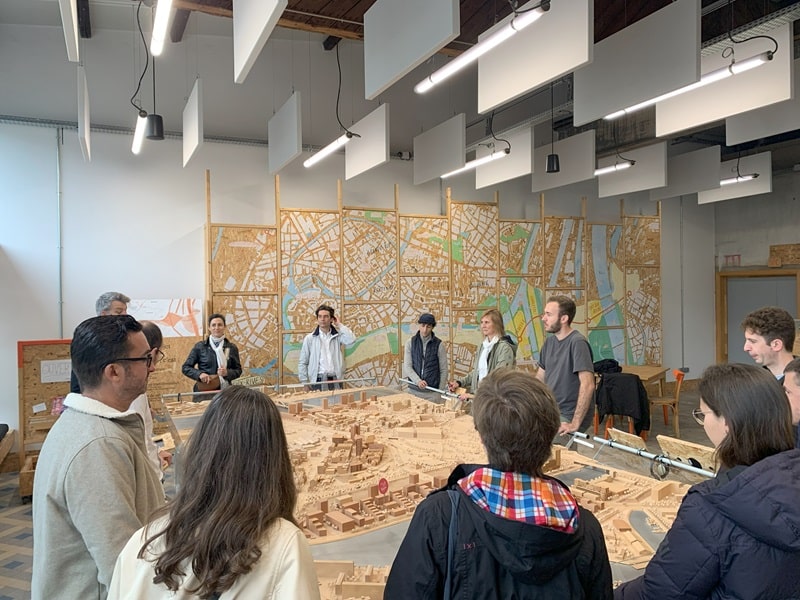
We stay in the neighborhood to eat at the ANCRAGE project cafe and then meet the UN1ON architecture firm in charge of renovating the KALEIDOSCOOP project. The winning approach was one where they introduced participatory and collective architecture with a huge desire for reuse in a difficult and initially quite closed context to these concepts. The result is balanced and seems to work. What is certain is that this firm, founded in 2013 by four partners, will continue to make headlines with its approach to architecture as a vector of interaction, aimed at promoting life and expanding possibilities. For this last visit, we were once again surprised by the warm, benevolent, and frank welcome of the people of Strasbourg. It is certain, we will return to Strasbourg to appreciate the results of these beautiful projects.
For any information regarding EEN services, which help you innovate, find partners, and internationalize for free, and which are present in more than 60 countries worldwide, do not hesitate to contact our colleague Sabrina BIJLSMA.
Moreover, our colleague Marie VANAERDE, a member of the International Network of hub.brussels, is your contact and your liaison in the Grand-Est market. She:
- guides you through the specifics of the different markets and refines your export project with you: regulations, competition, access conditions, permits, etc.
- offers you personalized support, whether in Brussels during the Brussels Exporters Day or on the ground, during an individual prospecting trip, an economic mission, fairs, or exhibitions.
- facilitates your access to both authorities and companies in the country, thanks to their local customer portfolio and knowledge of local practices.
